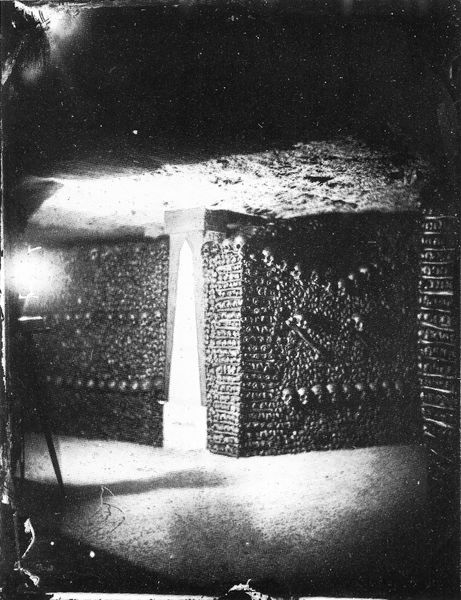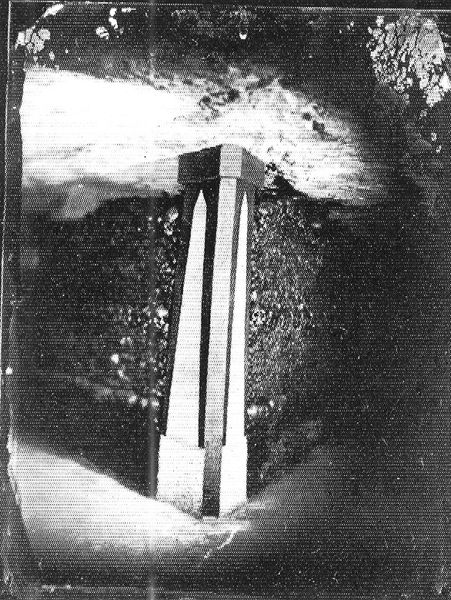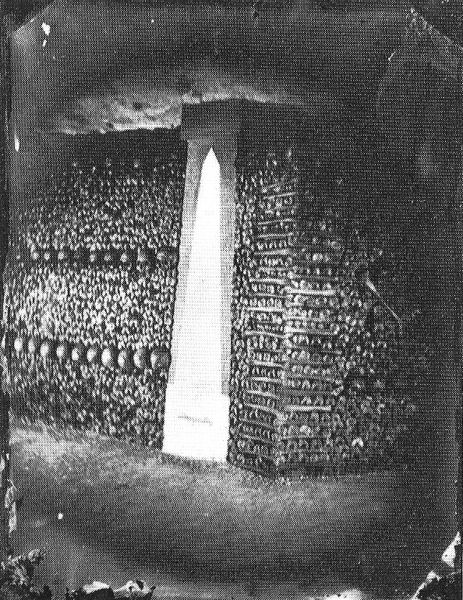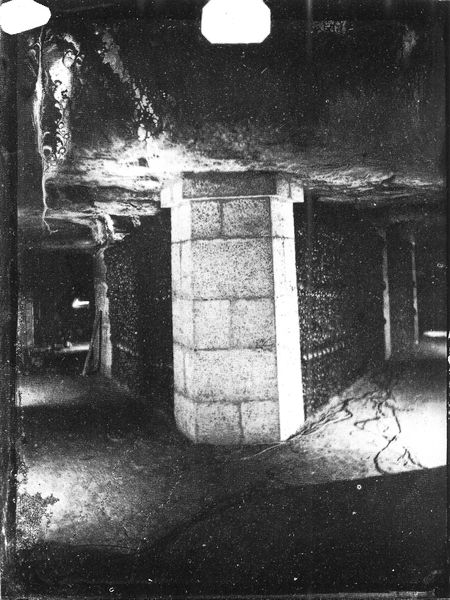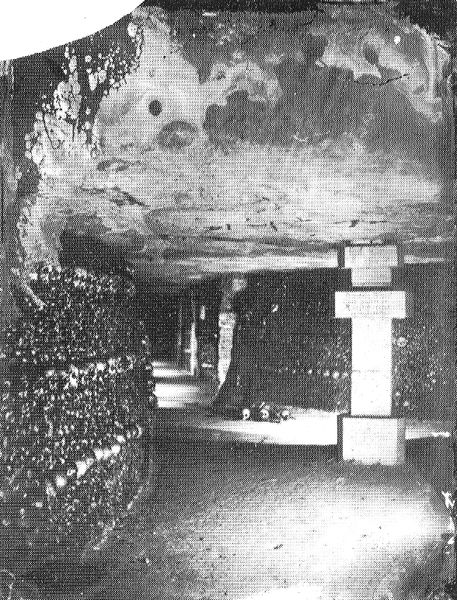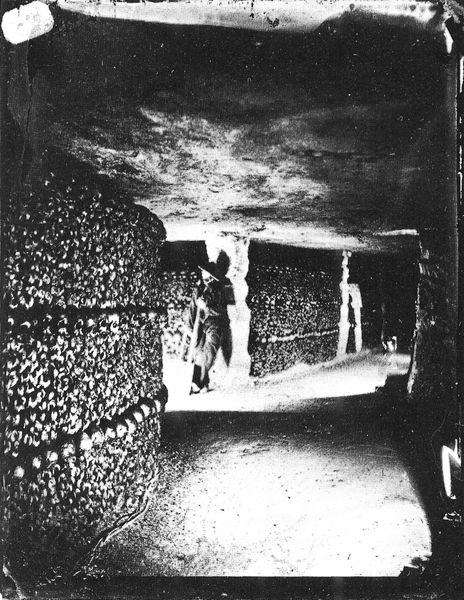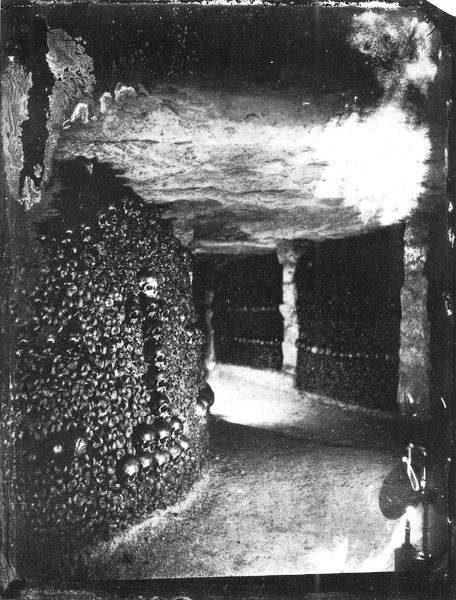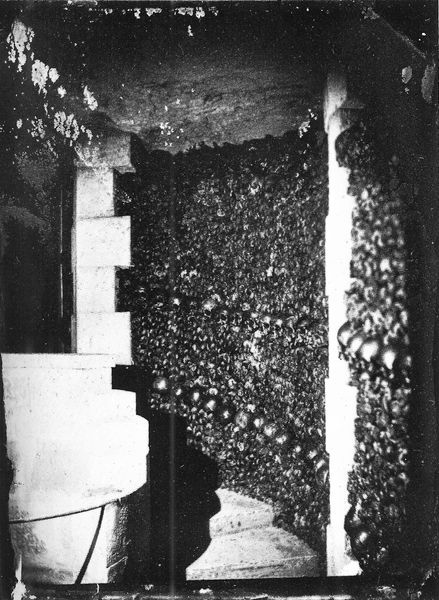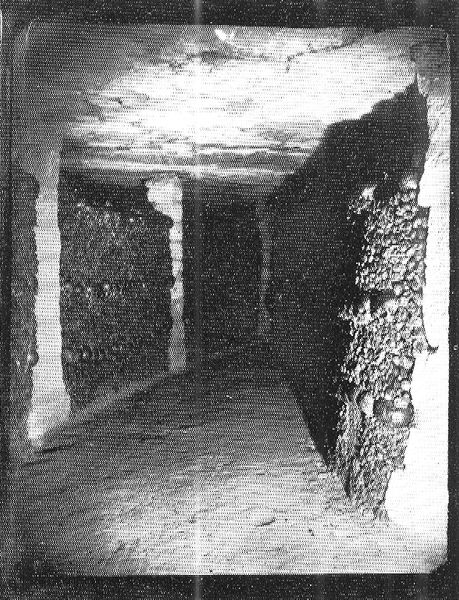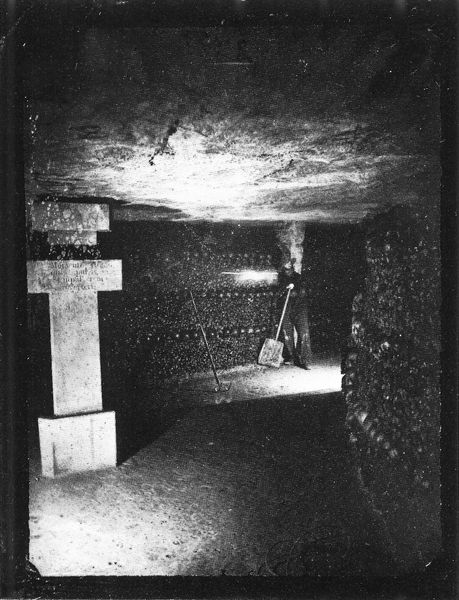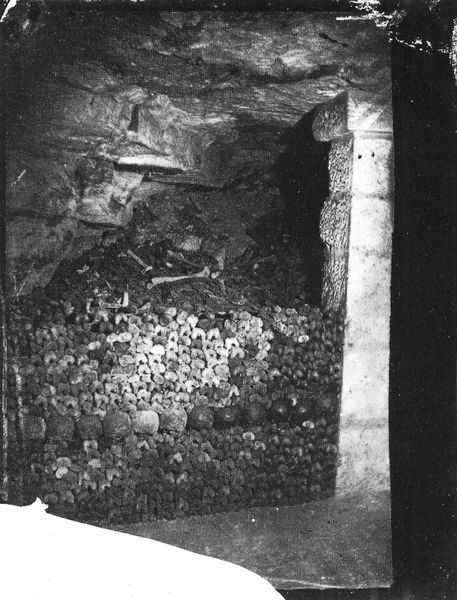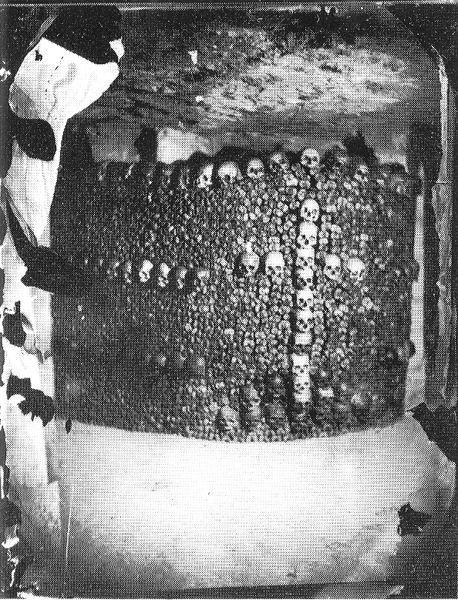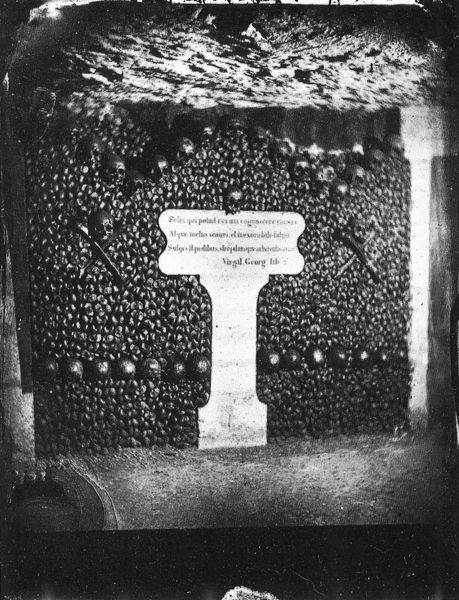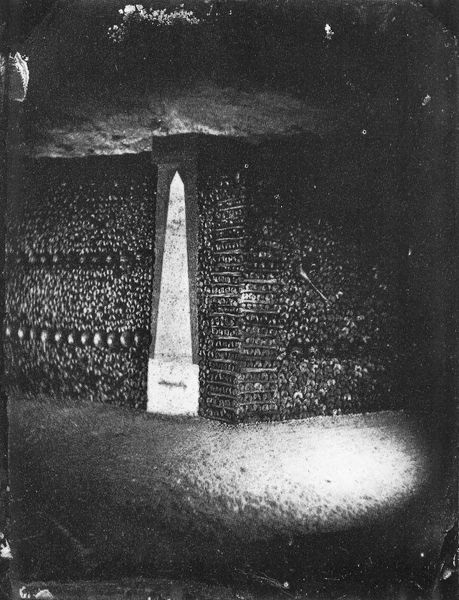
Copyright: Public domain
Editor: This photograph, “Catacombes De Paris” by Felix Nadar, created in 1861, depicts a macabre scene within the Paris Catacombs. The sheer scale of skulls and bones is overwhelming. How do you interpret this work, especially given its historical context? Curator: This image resonates powerfully as a commentary on social inequities masked by the grandeur of Paris. The Catacombs, filled with remains from overcrowded cemeteries, highlight a crisis of inequality. The neat stacking of bones is both organized and disturbing, forcing us to confront our own mortality and how society manages death – often unequally, based on class and social standing. Notice how Nadar, active during a time of massive urban development and social upheaval in Paris, uses photography—a then-modern medium—to document and, perhaps, critique the underbelly of progress. What kind of statement is being made by immortalizing these displaced individuals? Editor: So, it’s more than just a depiction of a place, it's also a statement about social inequalities at the time? Curator: Precisely. It raises questions about who gets remembered, how, and where. Consider the context: Haussmann's renovations displaced many working-class Parisians. These bones, a literal displacement, mirror the social displacement occurring above ground. How does this photograph engage with broader discussions about power, marginalization, and historical narratives? It begs us to consider whose stories are being told and whose are being buried – quite literally. Editor: It’s fascinating to think of this image as a document of social commentary and class disparity in 19th-century Paris, far beyond my initial understanding. Curator: Exactly! Seeing art through this lens—historical, social, and political—broadens our perspective. There's always more beneath the surface waiting to be uncovered and questioned.
Comments
No comments
Be the first to comment and join the conversation on the ultimate creative platform.
